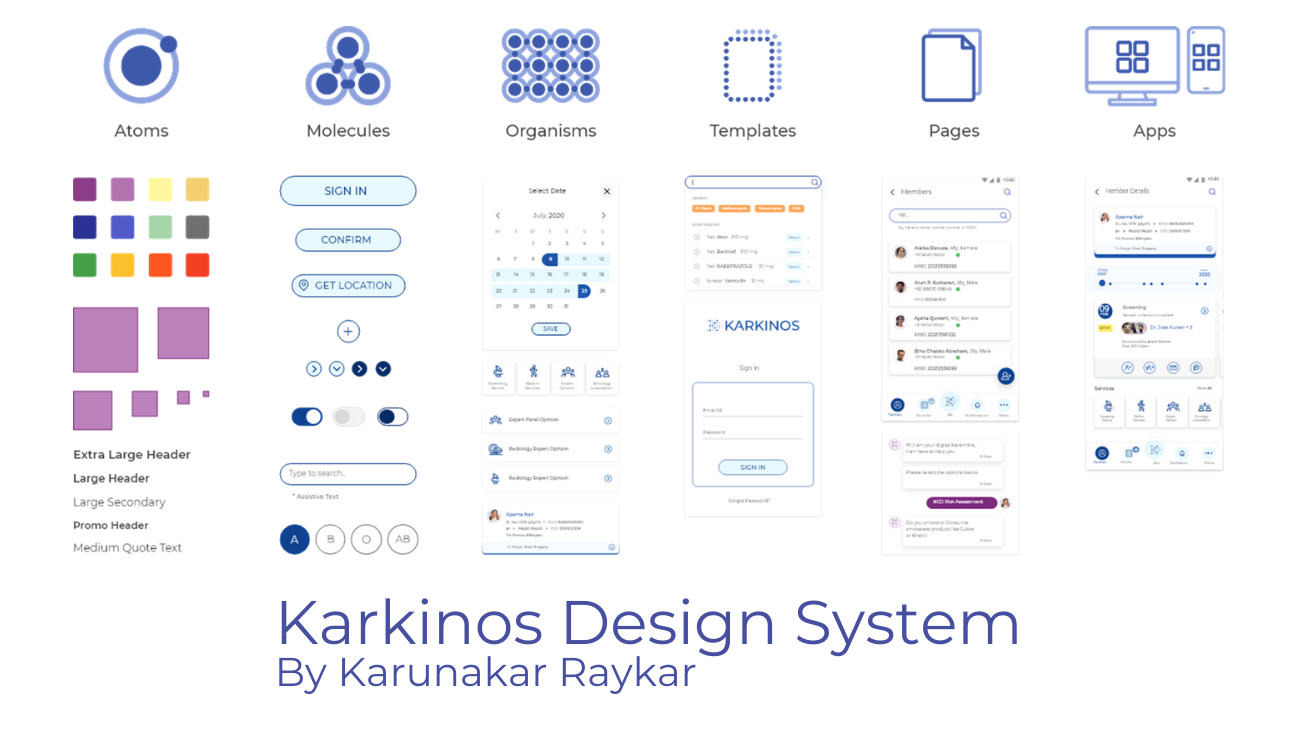Karkinos Design System – Towards creating a care collaboration and person-centered application suite
By Karunakar Raykar, Head of Design, UI/UX, Karkinos Healthcare
Introduction
KARKINOS DESIGN PHILOSOPHY
Design systems have been prevalent in the Healthcare Industry since a long time. One of the first publicly available design systems that have been published was in the year 2007-08 that was developed by Microsoft in partnership with the NHS, UK. It was called the Common User Interface for Healthcare, popularly known then as the MS-CUI.
The purpose of this system was to create a Usability guideline for healthcare solutions that were to be rolled out throughout the NHS, “Guidance documents contain sets of criteria which should be adhered to when designing web based or standalone applications for healthcare professionals” 1
Karkinos Design System presents Design Guidelines across a broad range of interface elements for the creation of a safer and more user friendly Karkinos Solutions ecosystem. The guidelines will be used by various teams internally to Karkinos Healthcare and externally in our partner ecosystem to create apps and enable digital services using these Design guidelines.
A report published by the Institute of Medicine 2 , US “To Err is Human: Building a Safer Health System” emphasised the need for healthcare organisations to adopt healthcare technology systems to ensure improved patient safety.
Elaborate studies and research around usability guidelines, user journey maps will be conducted and the outcomes will help us incorporate these learnings into the Karkinos Products.
The Karkinos Design System is based philosophically on the Atomic Design by Brad Frost for the broader construct and
the Google Material Design Guidelines for design & interaction.
The Atomic Design Guidelines: Rationale for the creation of the Karkinos Design System. The atomic design guidelines enable the modularisation of content and information into reusable components. Modularisation of information has been used across various industries to a great extent and a similar approach has been used for many years in software development.
As part of the Karkinos Design Guidelines, incorporating Atomic Design enables us to have many capabilities of a true web 3.0 design and allows us to build modules, components, patterns and features that are able to scale with the usecases we will be incorporating within the Karkinos Healthcare Technology ecosystem.
